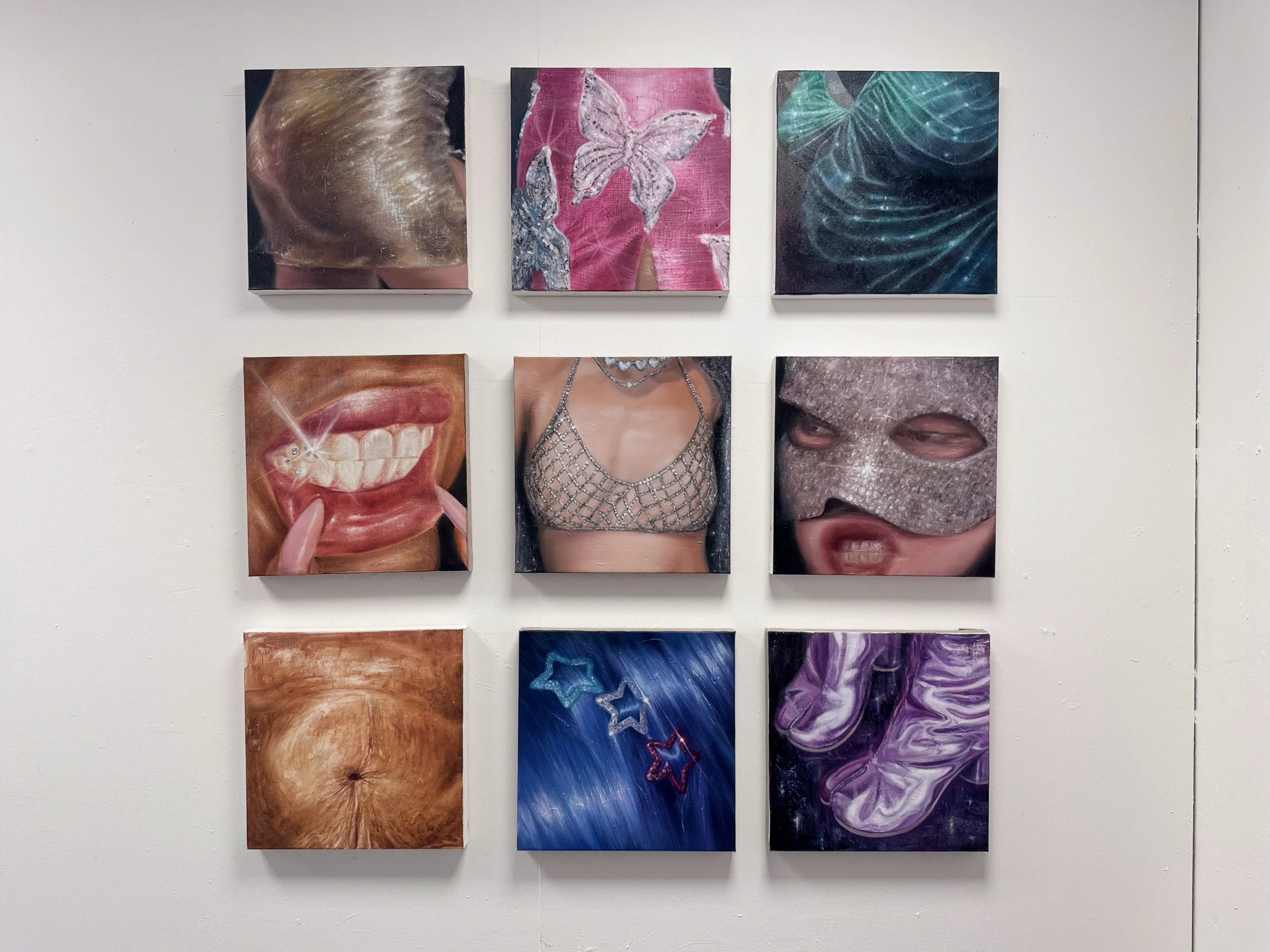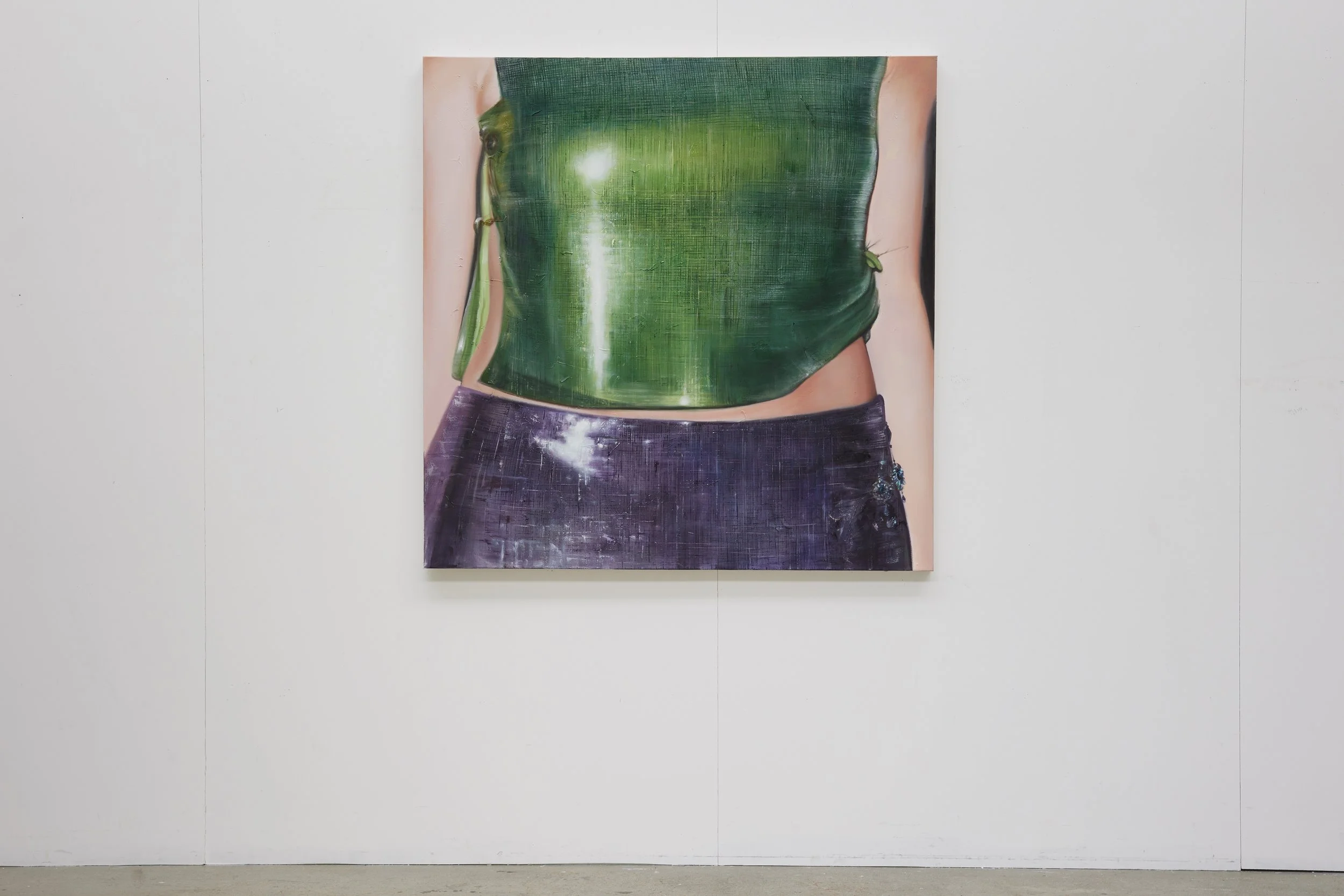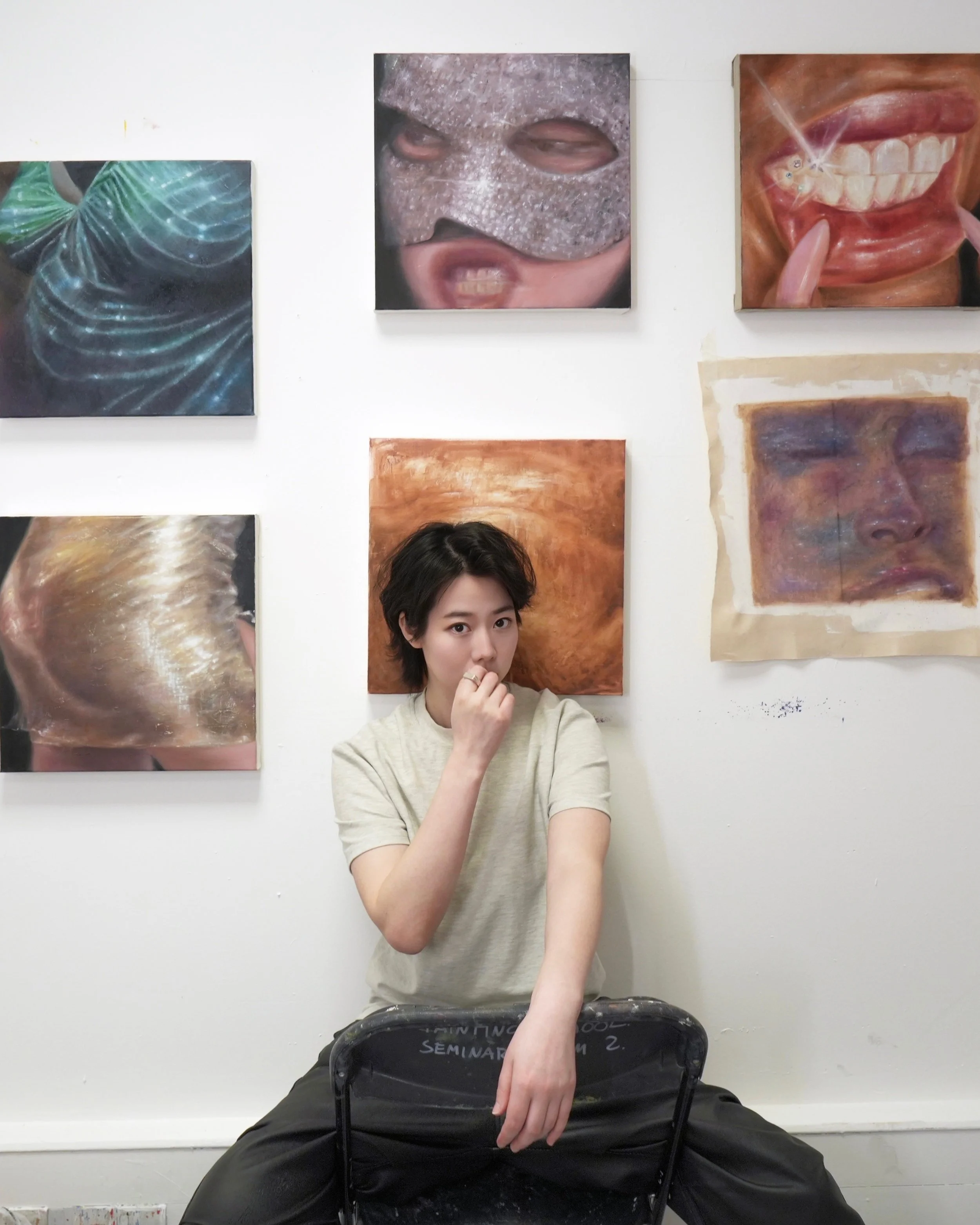How do adornment and obscurity work together in your compositions?
“In my work, adornment often captures attention first, the dress, the surface, the beauty. But as the viewer tries to understand, they’re met with resistance, the image is fragmented, emotionally distant. This tension disrupts the traditional dynamic of “gazing” and “being gazed at,” making the act of looking itself unstable and uneasy.”
I deliberately exaggerate decorative elements, pushing them from attractive to uncomfortable - too smooth, too still, too perfect. Their artificiality becomes visible, revealing a kind of emotional dissonance beneath the surface. It invites the viewer to ask: what fractures of identity and feeling are hidden behind this gloss?
The fragmentation of the body further breaks the illusion of wholeness. The viewer can’t see a complete figure, nor connect emotionally through facial expression. This absence mirrors reality, how women are often divided by social labels, roles, and expectations, their identities constantly shaped and fractured by the gaze.”





